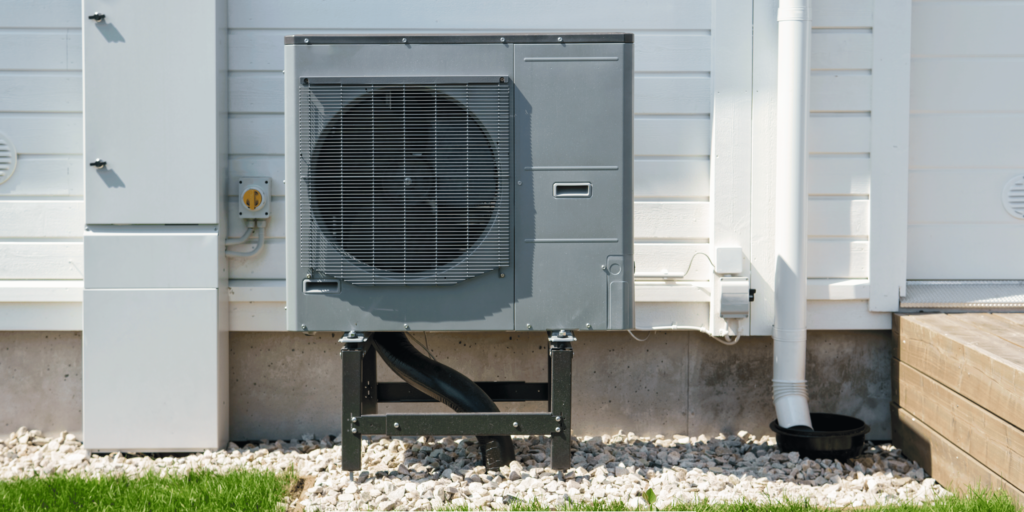Heat pumps have emerged as one of the most popular space heating and cooling technologies over the last few years. However, misconceptions and myths about how heat pumps work and their efficiency remain prevalent. This article will examine some of the myths about heat pumps to bring you the facts.
Myth 1: Heat Pumps Don’t Work Well in Cold Climates
This is perhaps the most common myth about heat pumps that we will be discussing in this article. This is true even though current models of heat pumps are capable of functioning optimally even in these frosty environments.
– Modern heat pumps are much better at operating at low temperatures than the previous models. They can retain capacity with inverter-driven variable speed compressors that are capable of operating at below-freezing conditions.

– Most cold climate heat pump models offered today can provide efficient heating even in temperatures that go as low as -25°F (-31°C) or even lower. While their maximum capacity may reduce in very low temperatures, they are still very much usable.
– Additional cold climate innovations such as advances on defrost cycle, two-stage compressor, and better controls enhance heat pump efficiency in chilly climate.
Therefore, modern heat pumps work for heating in various colder northern climate zones, as people tend to think.
Myth 2: Heat Pumps Struggle to Heat Spaces Effectively
Some argue that conventional heat pumps are not as efficient in heating indoor environments as other heating systems. The facts prove otherwise for appropriately sized units.
– Today’s heat pumps can effectively warm homes with steady air discharge temperatures ranging from 90 to 120 degrees Fahrenheit (32 to 49 degrees Celsius).
– Variable frequency drives control heating capacity to meet the load without varying temperature.
– A backup heating system such as gas or electric coils is used in dual-fuel systems during extreme cold temperatures as required.
– Proper heat pump sizing coupled with correct installation and duct work design provide adequate heating capacity in almost all the climate zones and most houses.
Therefore, when selecting, installing, and managing heat pumps, homes can be heated very well.
Myth 3: Heat Pumps Are Noisy and Disruptive
Older generations of heat pumps were significantly louder, which is why this myth is so widespread. New-generation heat pumps are not as noisy as the older models when operating.

– The enhancements made to fans have reduced velocities to a level that minimizes airflow noise in indoor heads.
– Compressor noise is reduced by having sound-absorbing liners located within the housing that is external to the device.
– Inverter drives do not apply their total capacity all at once because they do not perform noisy start stops.
– Reduced noise modes are other features that lower the noise level of equipment, especially during early morning or evening hours.
Therefore, despite being quite complex machines with state-of-the-art designs in terms of acoustics and vibration control, today’s heat pumps are not very noisy in general.
Myth 4: Heat Pumps Cost Significantly More Than Furnaces
Most people think that heat pumps, including the ducts if necessary and the cost of installing a heat pump and ducts are significantly more expensive than a gas furnace. Surprisingly, it is often the same price to employ any of the two strategies in many cases.
– It is important to note that the government also offers rebates and tax credits to help homeowners pay for heat pump systems; these range from $1000 to $5000.
– Most contemporary heat pumps can range from 300 to 400 percentage by utilizing heat from the surrounding air or the ground. This complements most of the electrical energy required in heating.
– The overall life cycle costs are typically lower over a period ranging from 15-20 years even though the costs are higher initially. This is because they have meagre annual maintenance needs and do not require venting as compared to fossil fuel systems.
When both the incentives and the total cost of ownership are taken into account, heat pumps are today very close to being cost competitive with other conventional heating system options in most geographic locations.
Conclusion
Most of the myths that have been prevalent for many years no longer hold true with today’s heat pump systems. Modern heat pumps can successfully control the climate and have quite an affordable cost of operation in regions with cold climates. They do not produce noise and also have fewer maintenance needs than other types of pumps throughout their use as well. Heat pumps are well suited for a variety of homes if adequately sized and installed for heating as well as for cooling.

